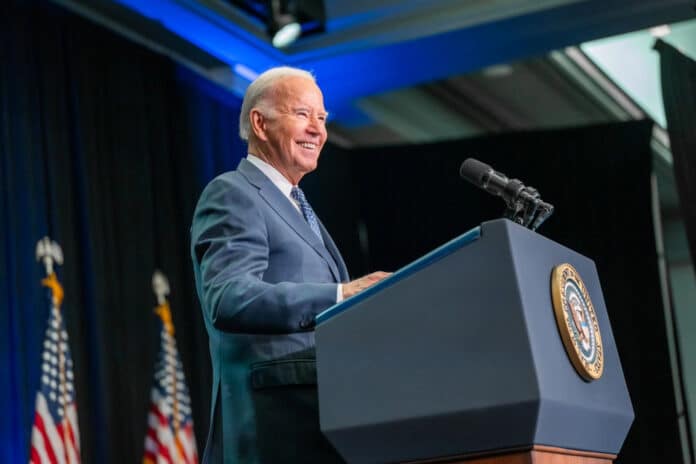
(RealClearWire) — The president may be proud of “Bidenomics,” with its massive, seismic transformation in the size and scope of government, but to voters, it is raw pain. Like a runaway train that has smashed into a small town’s railyard, everywhere you look, no part of the life we knew remains as it was before. Our life plans — well-laid and requiring hard work with just a little luck — no longer fit. Every time we open our wallets and we are hit by these new, hard choices — delay our child’s braces, forgo our teen’s college contributions, and pray the minivan tires hold up another month. This daily struggle of millions of families sitting at their kitchen table trying to make their hopes, dreams, and numbers work is far more difficult because of Bidenomics.
How did this new bout of inflation start? The president blames corporate greed, but most Americans know better. Many recall how the inflation of the 1970s disappeared only after two hard recessions in 1980 and 1981 and President Reagan’s spending cuts. For almost 40 years, Americans enjoyed low-inflation prosperity.
Yet both in and after the pandemic, federal spending took the opposite trend it did under Reagan — it exploded. Federal spending that had averaged 20.5% of GDP since 1982 instead totaled 60.5% of GDP for the two years of 2020-21 — an extra 20% of GDP. President Biden enacted $6.2 trillion of new 10-year spending on top of the $4.8 trillion in 2021 spending projected before the pandemic hit.
In adding an extra fifth of the economy to federal spending, did anyone add an extra fifth of goods and services to the economy? No, and to the contrary, government restrictions and limitations in some places remained long after the pandemic subsided. And with so much more money floating around, inflation exploded. Since Biden took office, prices are up 17.9%. That creates the first big problem, as wages are up only 12.7%, so working families are on average 4.5% in the hole. They need over $11,000 more each year to maintain the life they had before Bidenomics and they aren’t making that. Thus, 62% of adults say they are living paycheck to paycheck. Credit card payments are being delayed at the highest rate in a decade. With food now taking up the highest share of the family budget in 30 years, 59% of Americans feel “angry, anxious or resigned” when shopping for groceries.
But Bidenomics isn’t just about the end of the $1 pizza slice in New York City, shrinking the Dollar Menu at McDonald’s, or the loss of a dozen eggs for a buck and a half. Far greater damage is being done. With the Federal Reserve trying to beat the inflation out of the economy that Bidenomics added, higher interest rates are hitting everything. Homebuyers are paying around $1,300 more for a monthly mortgage than when Biden took office. Two in three say high housing prices are placing homeownership out of reach. Commercial real estate is caught between higher interest rates and falling property valuations as workers continue to work from home. And continued high interest rates are risking a recession. No wonder only 14% of voters say Biden’s economic policies have helped them.
Remarkably, Biden’s economic advisers laud the gains in the University of Michigan’s consumer sentiment survey, claiming recent highs prove “President Biden’s economic plan is delivering results.” Except those recent highs under Biden match previous recessionary lows. Only in the recessions of 1969, 1973, 1980, 1982 and 2008 have the University of Michigan’s consumer readings been comparable to Biden’s recent “successes.” The only exception was Obama-Biden’s first term when the expected strong recovery fizzled instead of sizzled at just 2.2% real GDP growth during 2010-12 — the weakest postwar recovery on record.
In his State of the Union speech, the president no longer denied that inflation exists, but insisted that he and we are victims of “corporate greed” and “price gouging.” Viewers can determine if what Biden says is fact or fiction by checking those claims on our website named for his economy: “Bidenomics.com.”
We should recall what Joe Biden promised America in 2020: an experienced leader who would bring the nation together. By insisting that inflation has everything to do with greed and nothing to do with excessive federal spending, he has divided the country and neglected the lessons from our effort to overcome double-digit inflation and build low inflation prosperity for four decades. How can the president claim “Bidenomics is about the future” when he has forgotten America’s economic past?
This article was originally published by RealClearPolicy and made available via RealClearWire.
Akash Chougule is vice president of Americans for Prosperity.
















